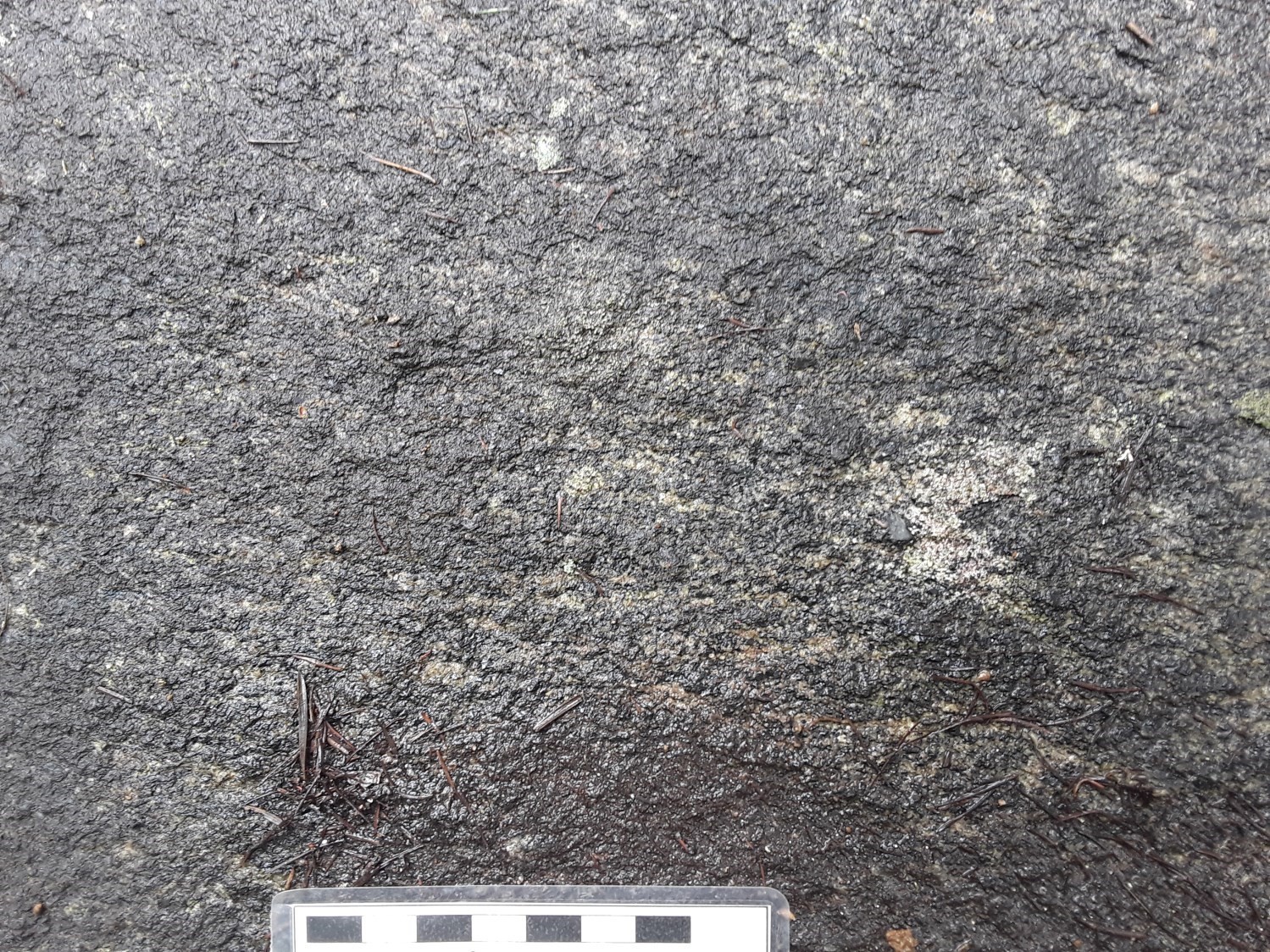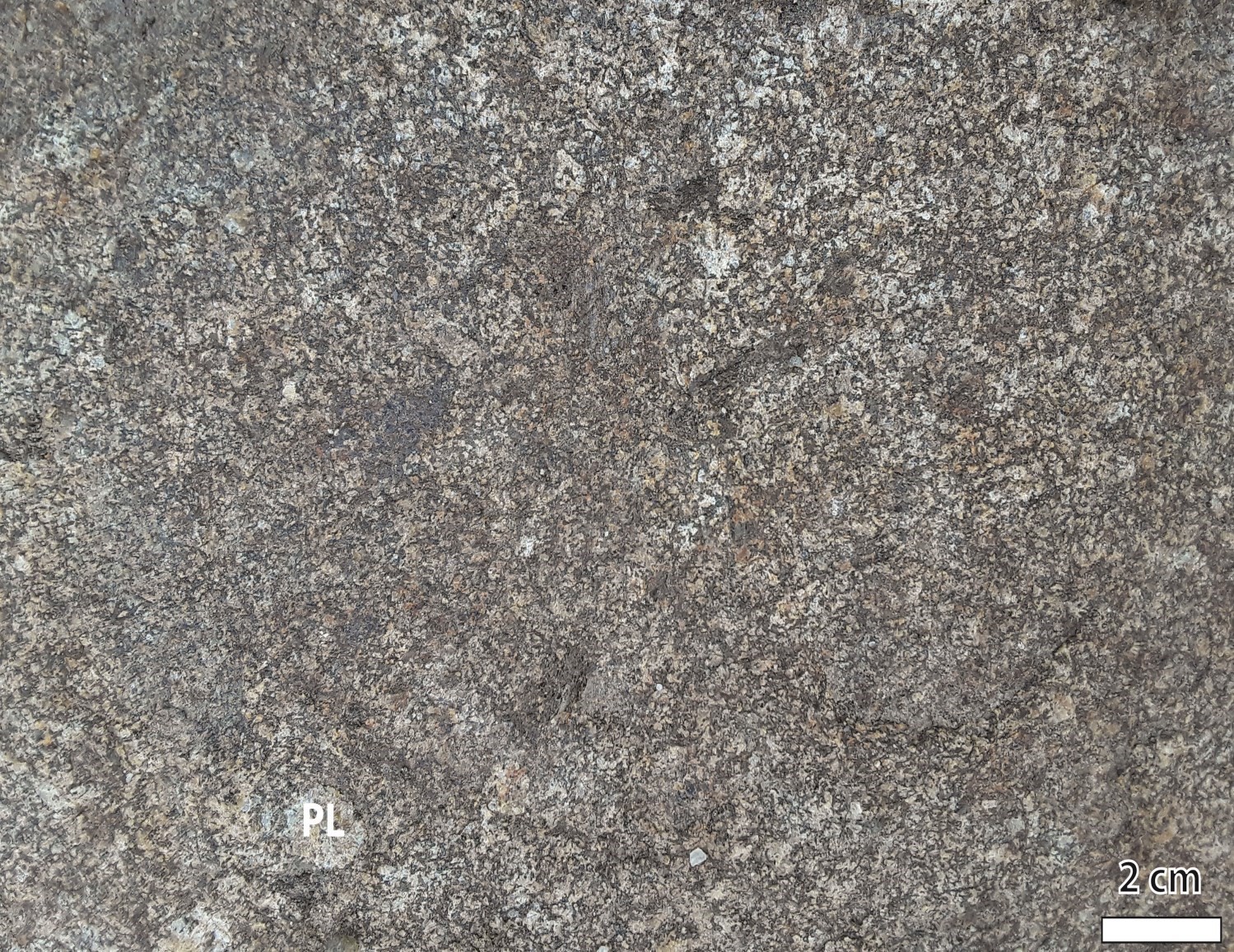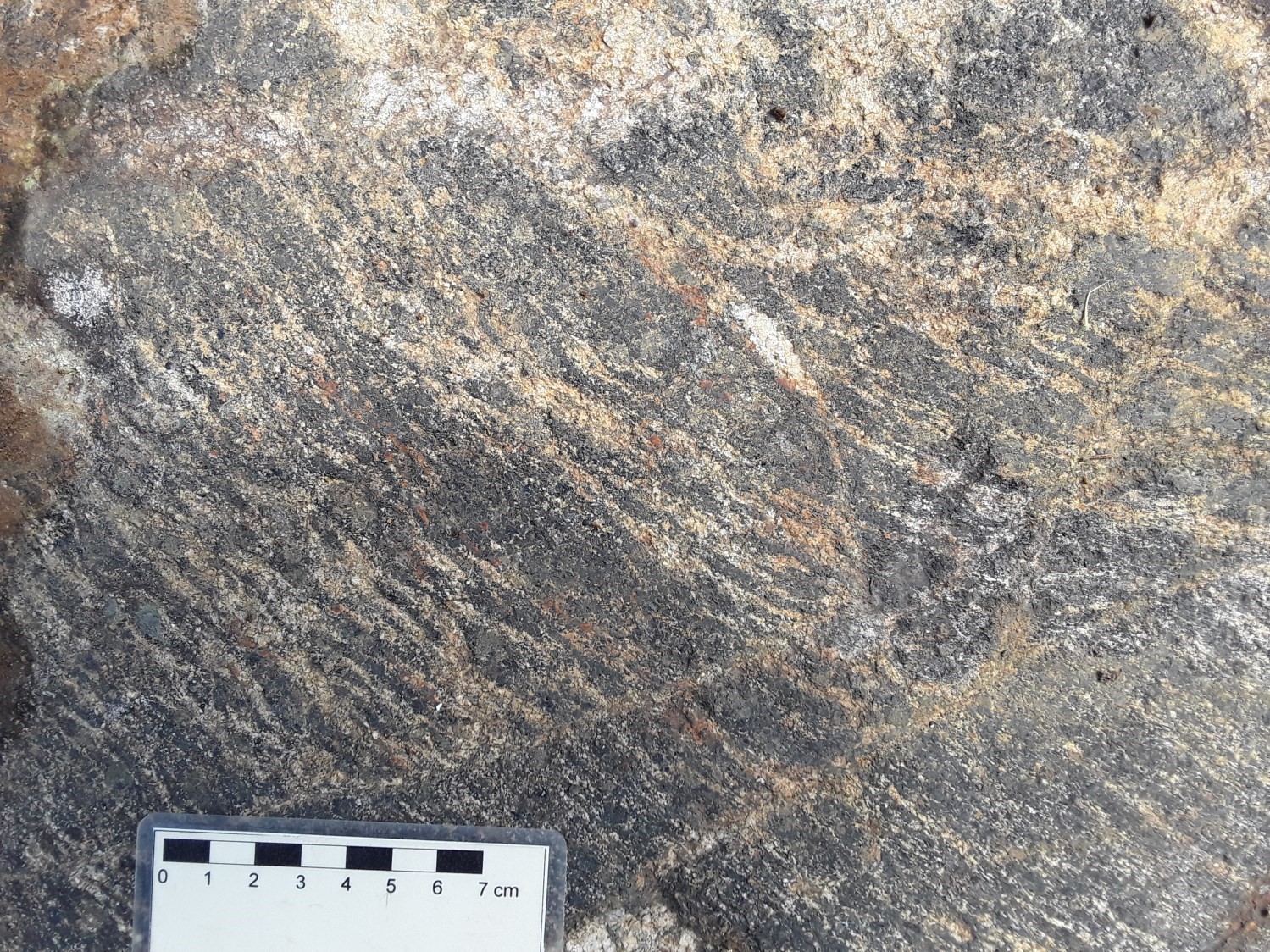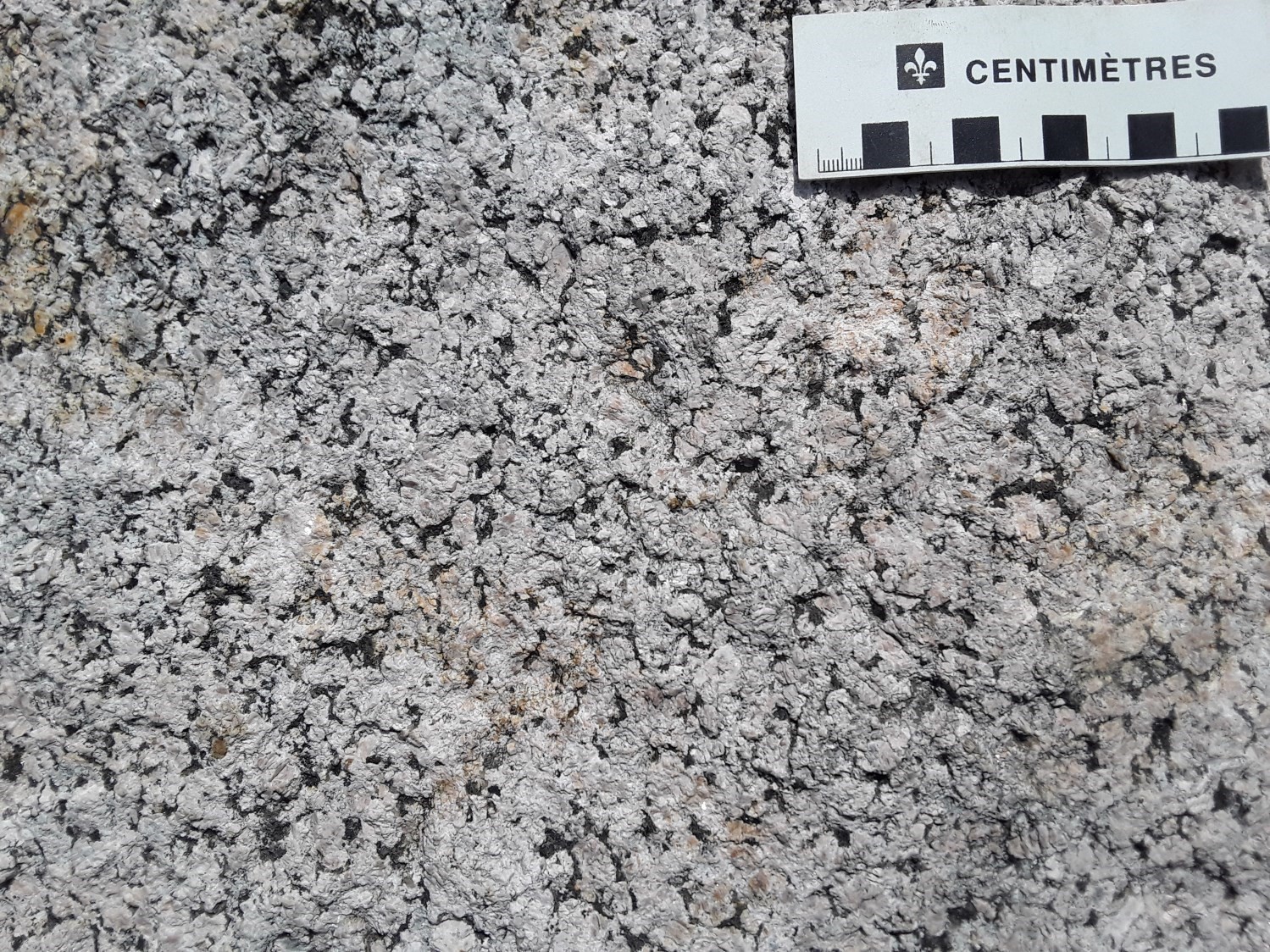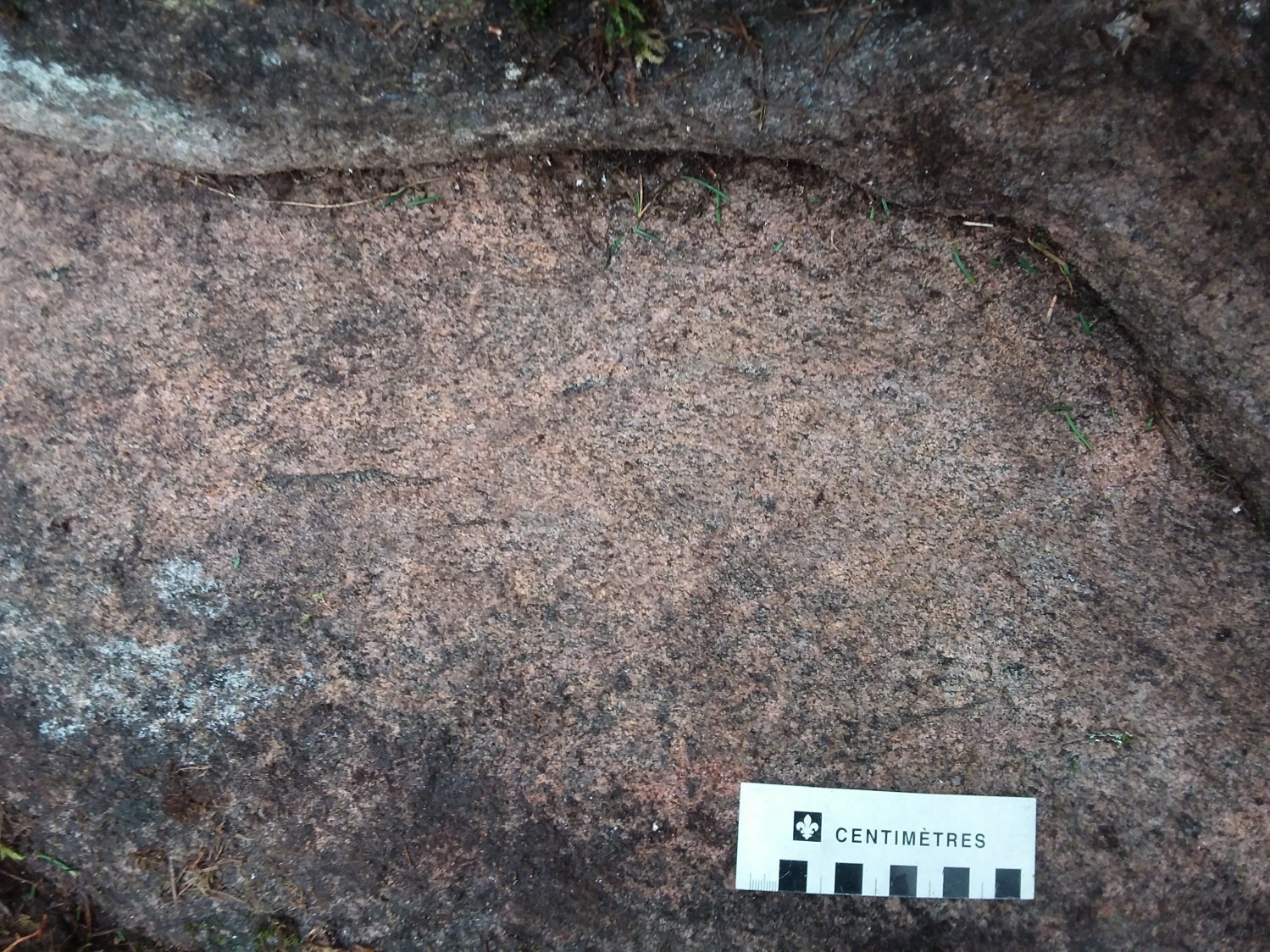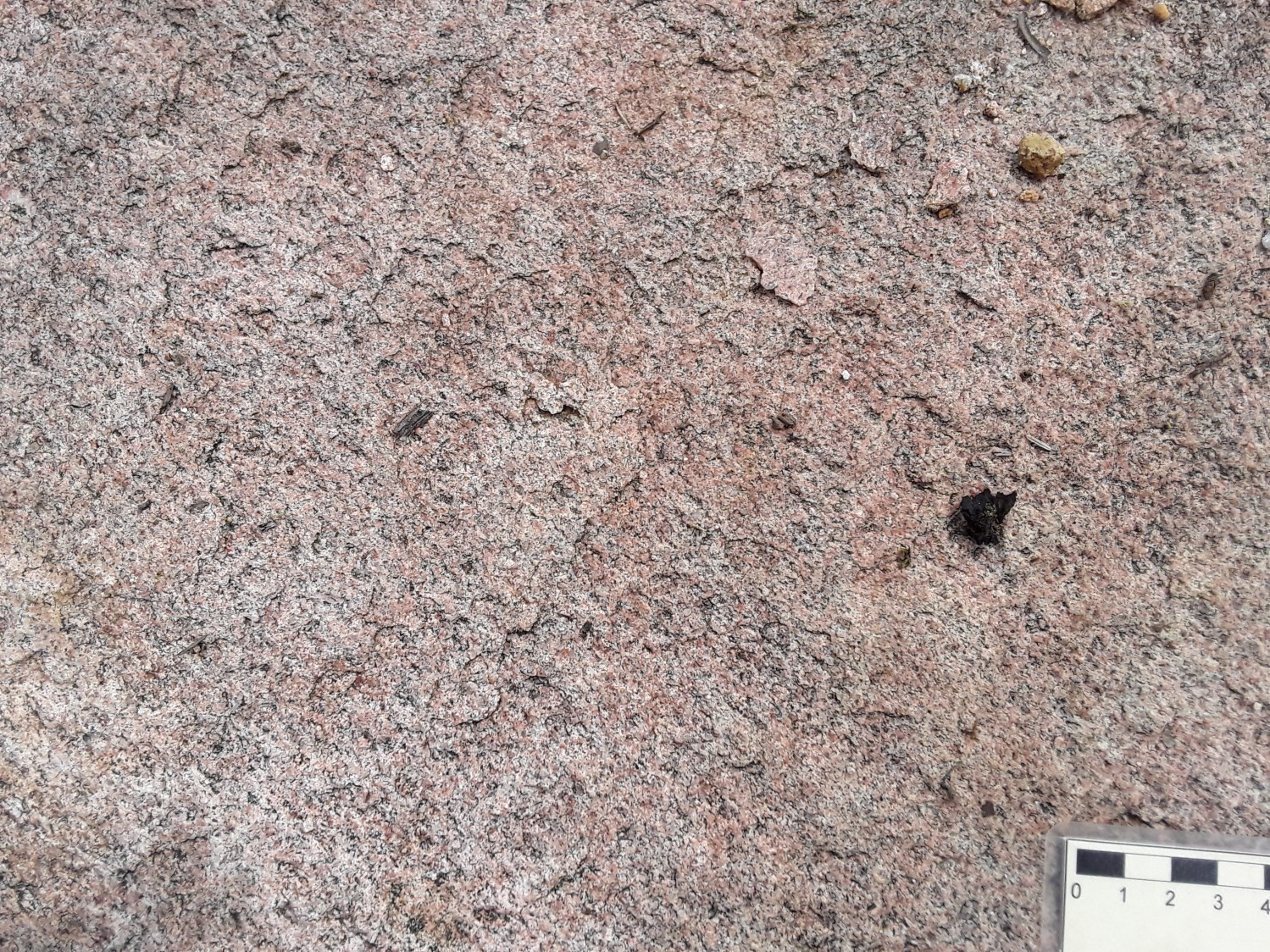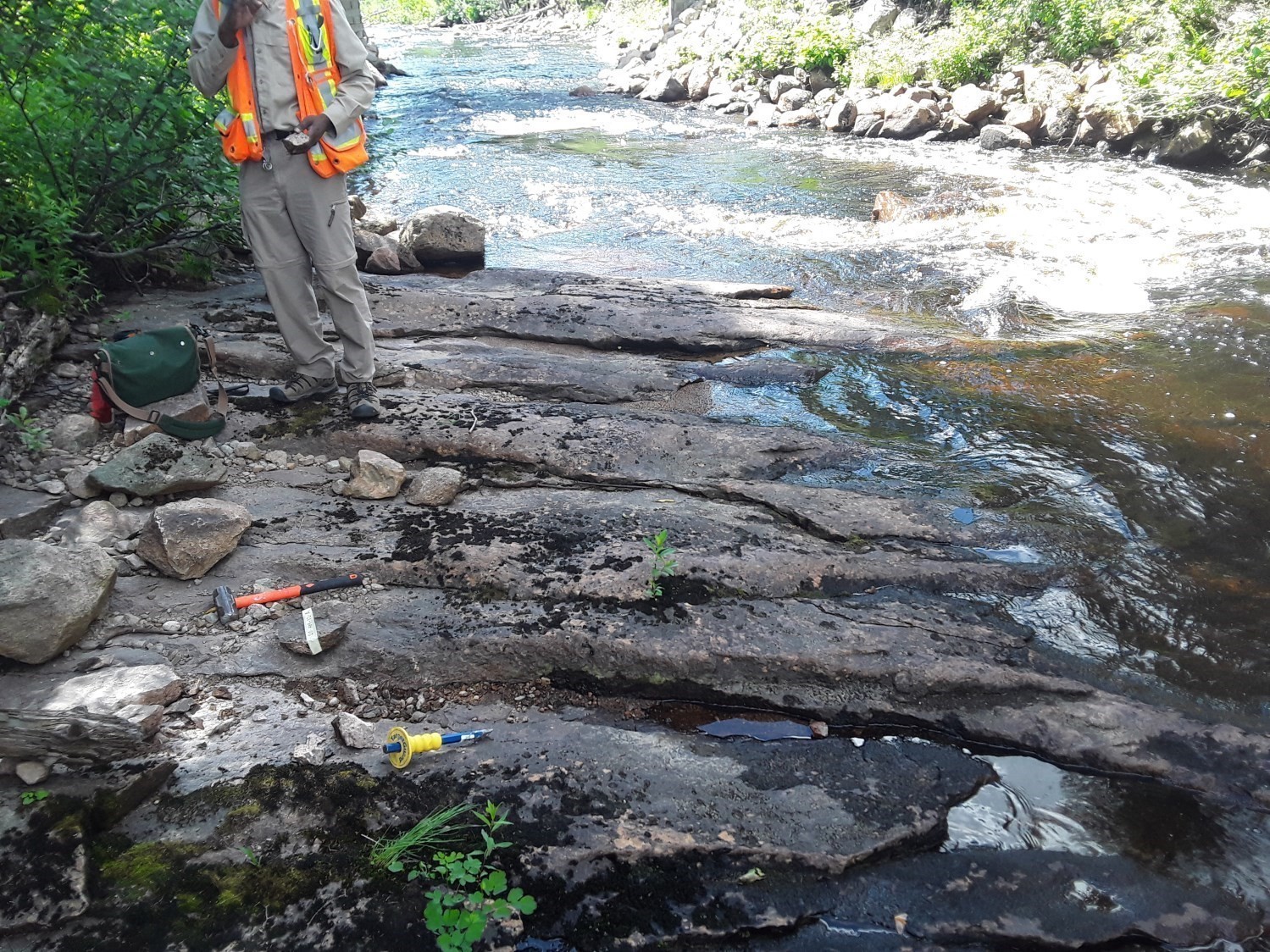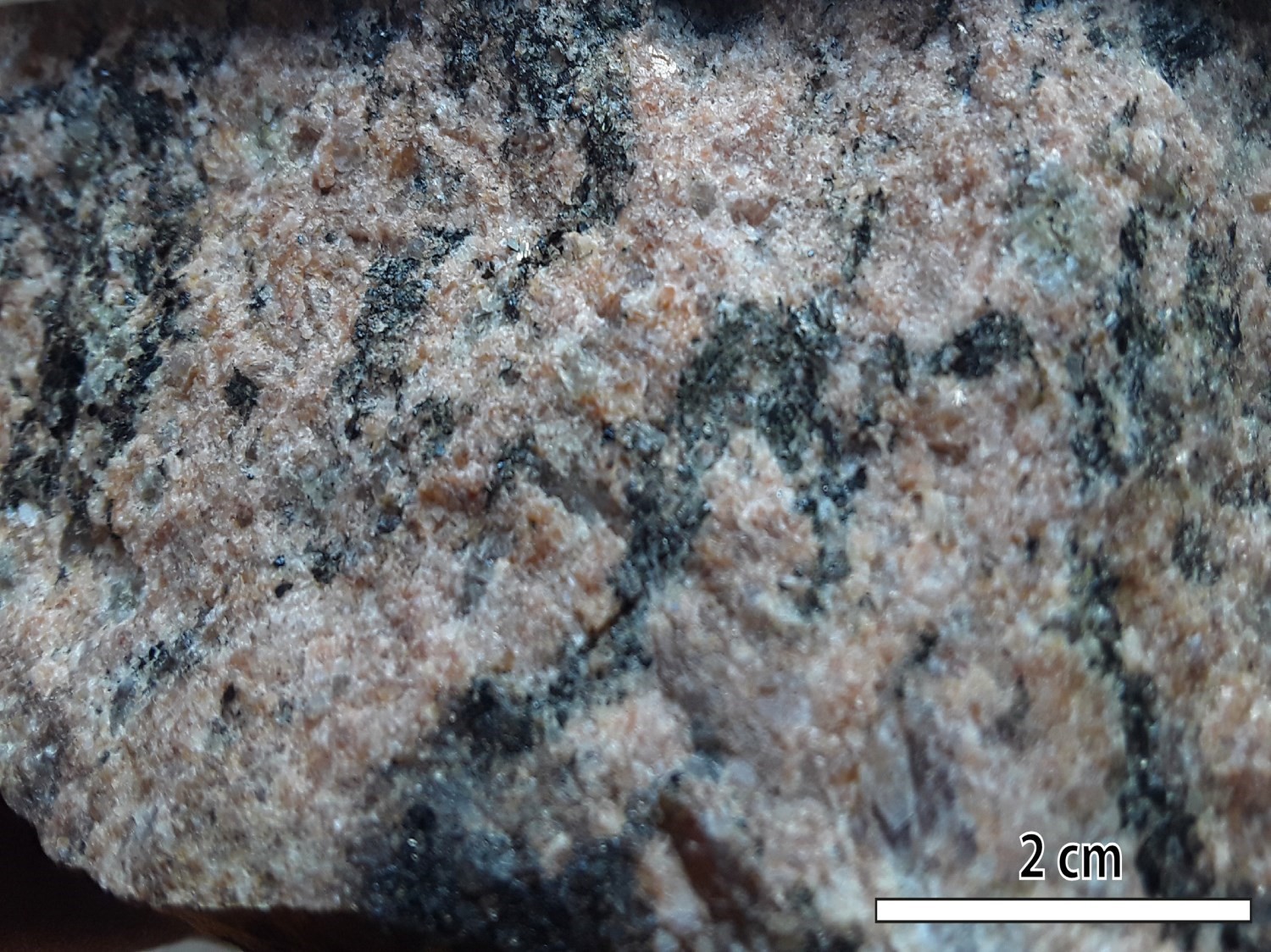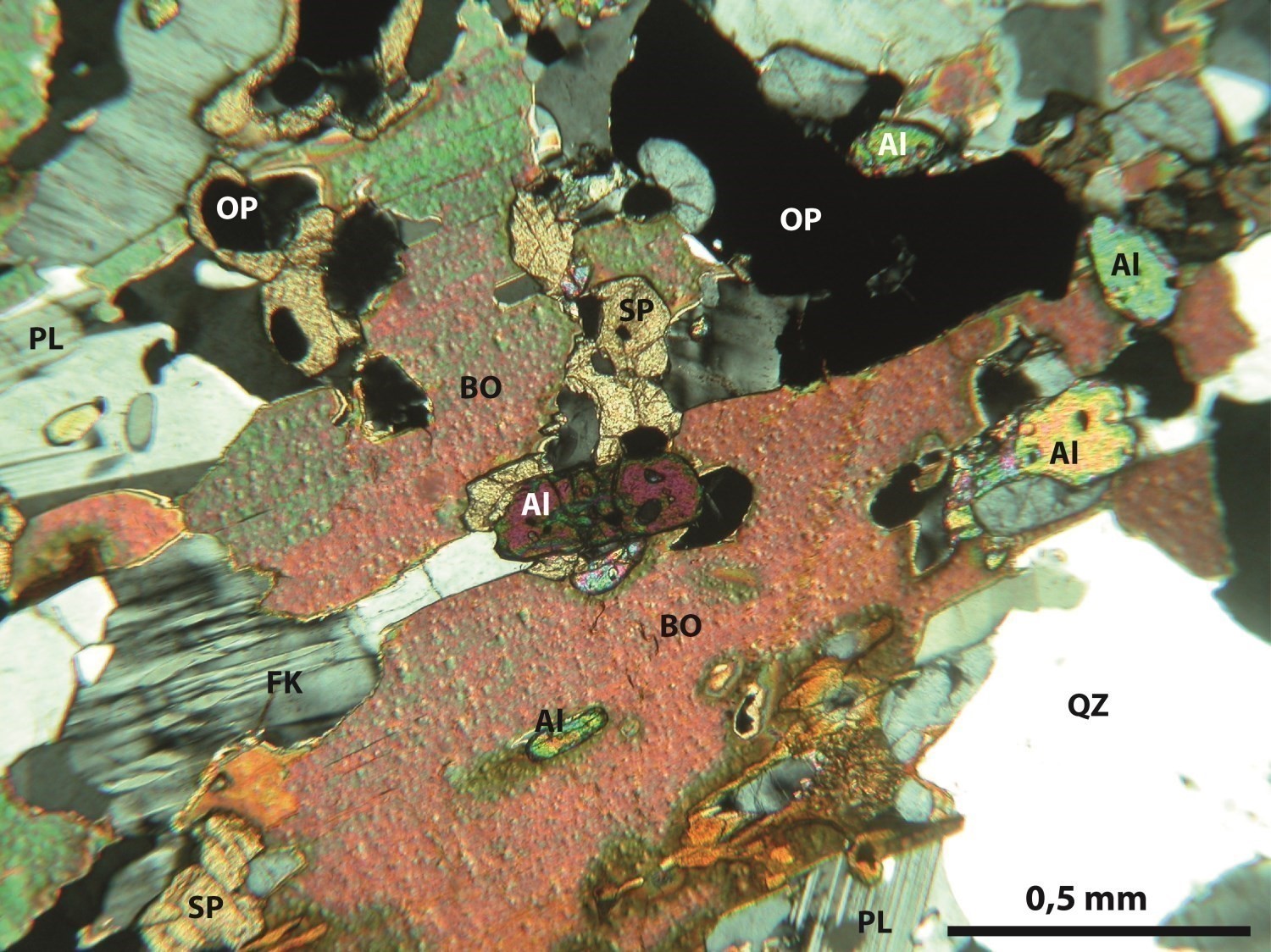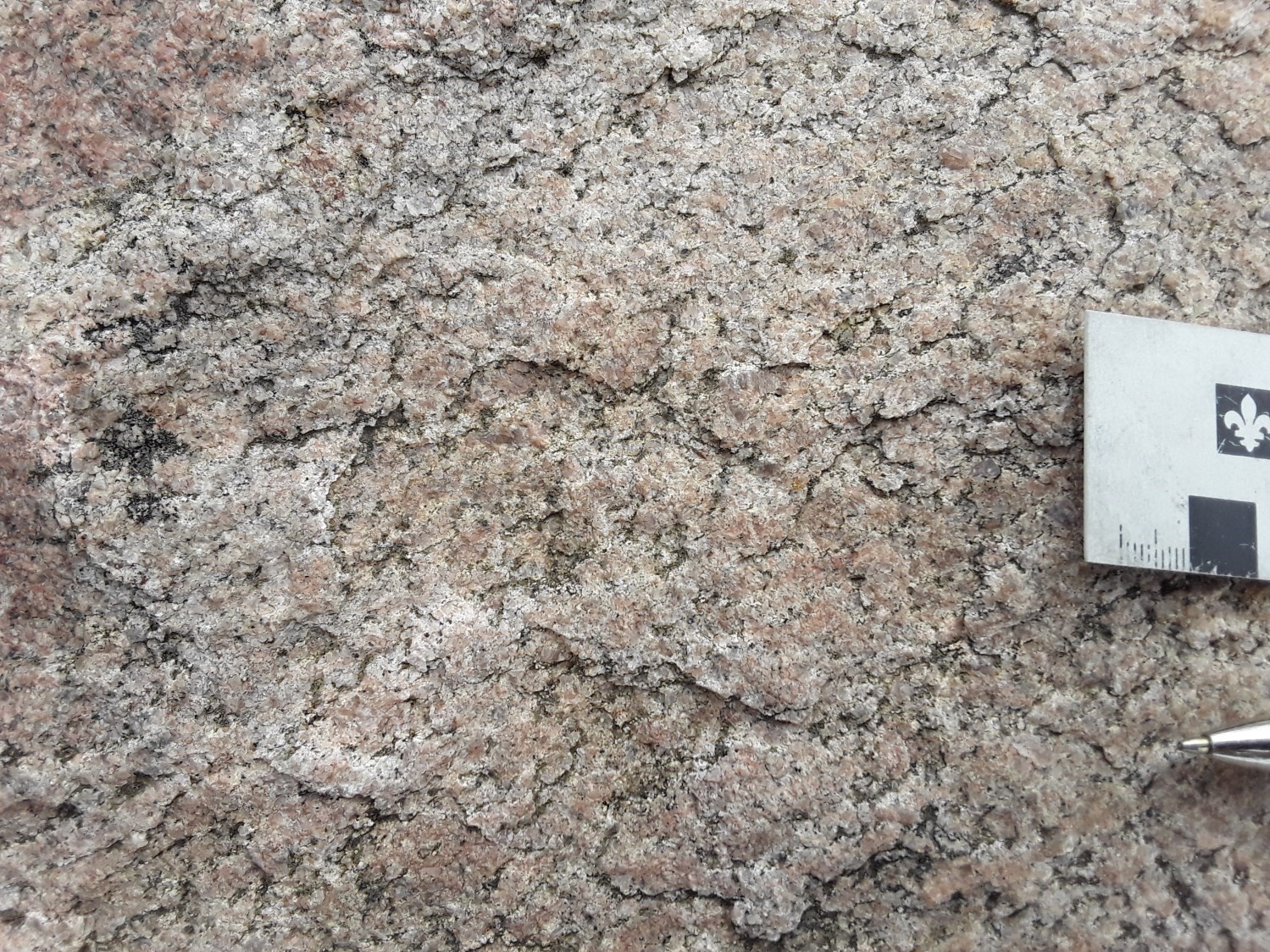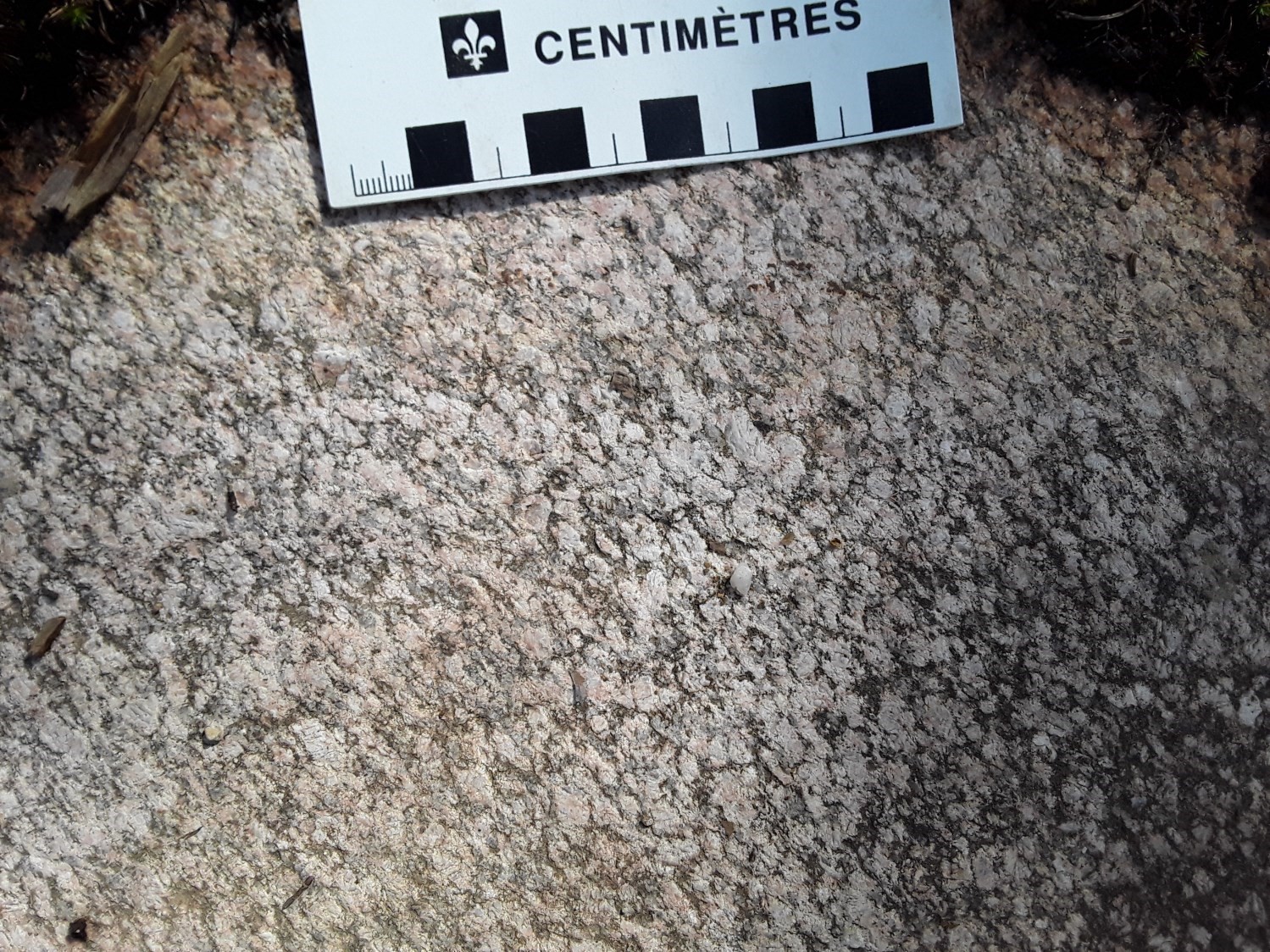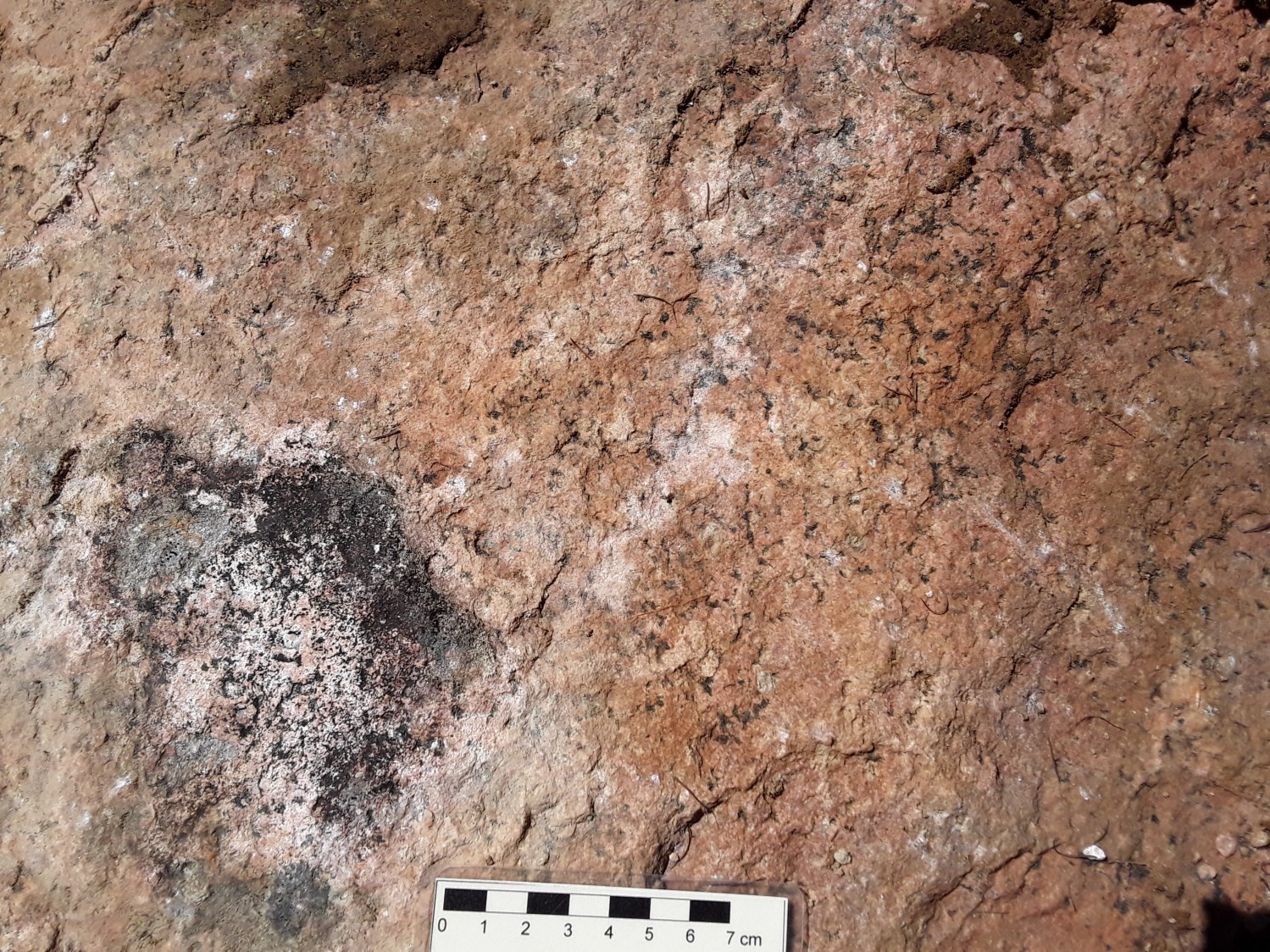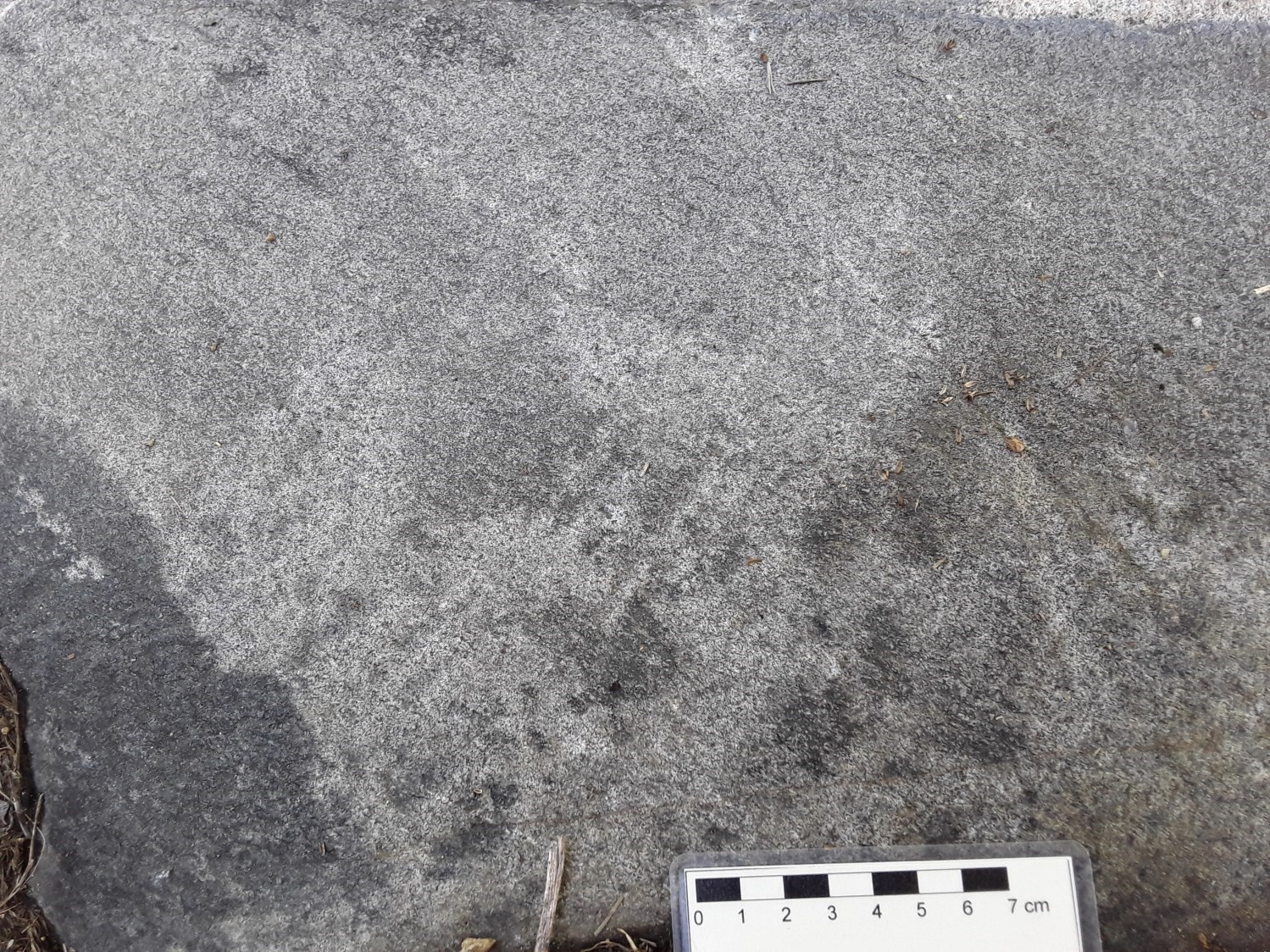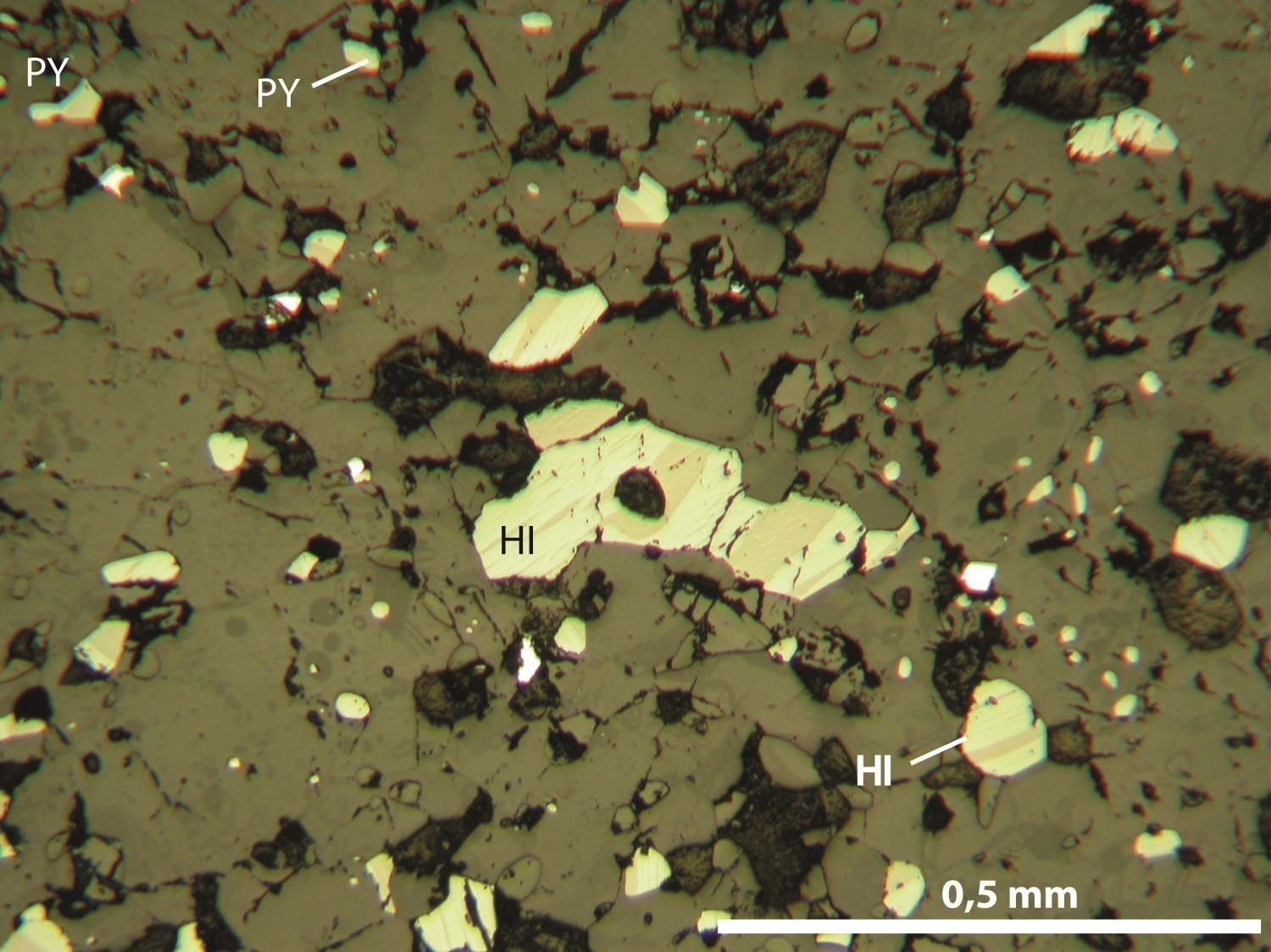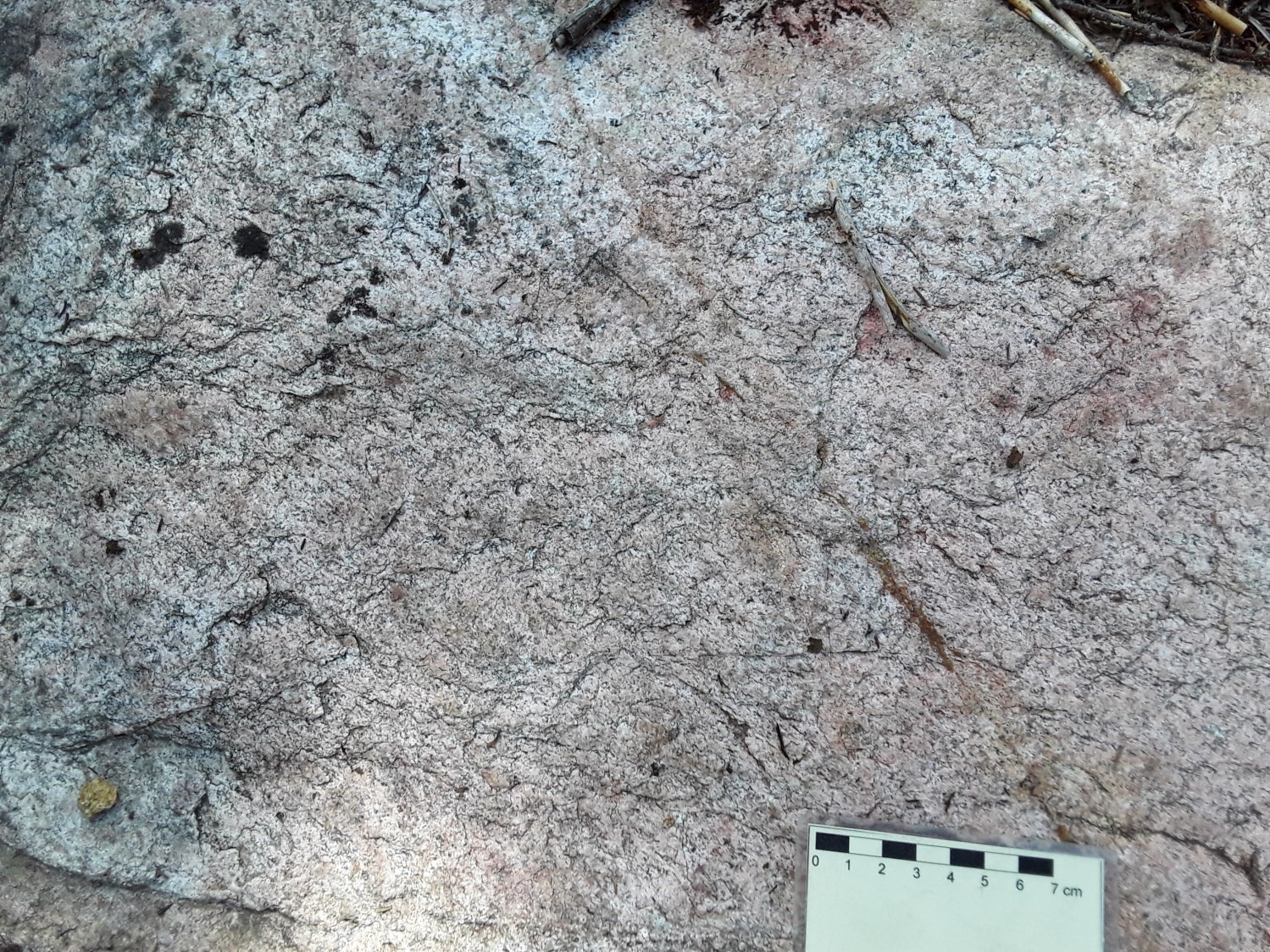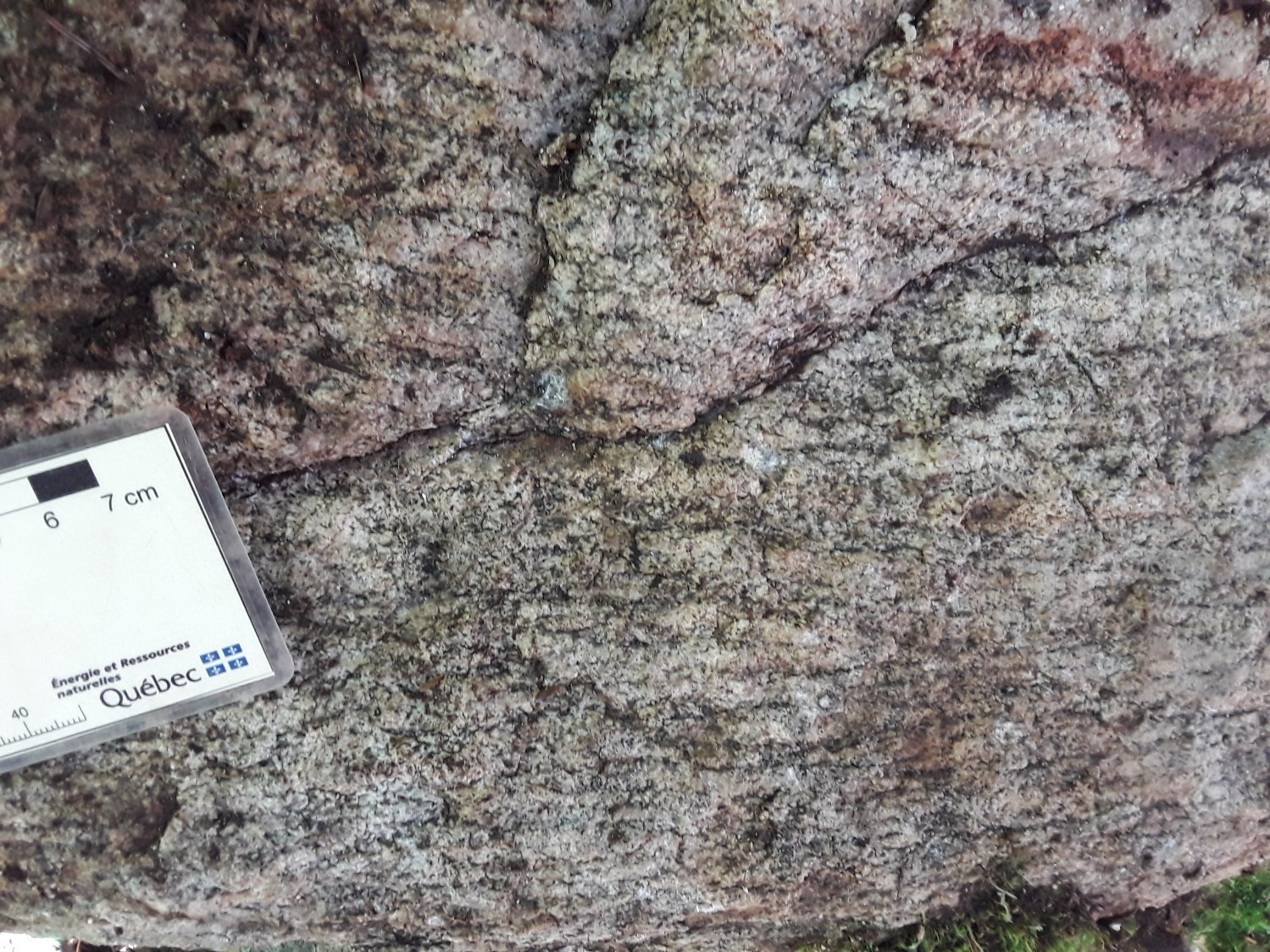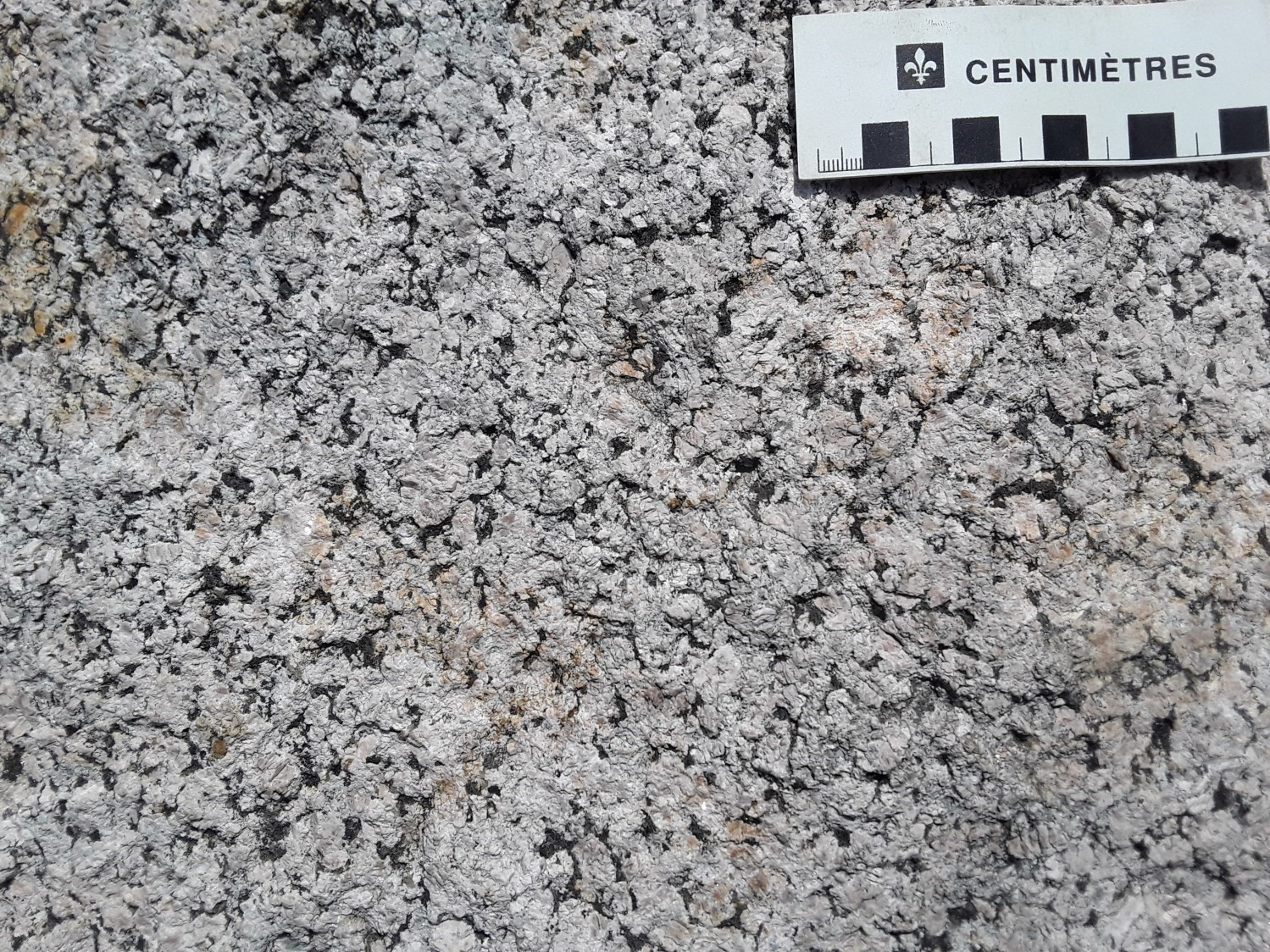
DISCLAIMER: This English version is translated from the original French. In case of any discrepancy, the French version shall prevail.
| Author(s): | Moukhsil and El Bourki, 2021 |
| Age: | Mesoproterozoic |
| Stratotype: | Reference outcrops 2020-FT-3071 and 2020-AM-072 |
| Type area: | Bois Vert Lake area (centre of NTS sheet 32H02) |
| Geological province: | Grenville Province |
| Geological subdivision: | Allochton |
| Lithology: | Felsic, intermediate and mafic plutonic rocks |
| Category: | Lithodemic |
| Rank: | Suite |
| Status: | Formal |
| Use: | Active |
None
Background
The Bois Vert Plutonic Suite was defined by Moukhsil and El Bourki (2021) during geological mapping of the Girardville area, NW of the Saguenay-Lac-Saint-Jean region (sheet 32H02).
Description
The Bois Vert Plutonic Suite (mPbvr) consists of several phases divided into three mappable units. The main lithologies of this suite are gabbronorite locally with Fe-Ti ± P oxides, quartz syenite with or without hypersthene, alkali feldspar granite, granite with or without hypersthene (syenogranite, monzogranite, charnockite) and mangerite (monzonite with hypersthene). These lithologies are highly magnetic, which allows the batholith to be easily identified on aeromagnetic maps (Intissar and Benahmed, 2015).
Boisvert Plutonic Suite 1 (mPbvr1): Fe-Ti±P-Oxide Gabbronorite Locally Porphyraceous, Minor Amounts of Feldspar Porphyraceous Quartz Syenite, Syenogranite and Charnockite
Gabbronorite (e.g. 2020-FT-3071 and 2020-AM-069) is black-green to rusty brown in altered patina and black-grey to white-grey in fresh exposure. It is generally medium grained, but locally plagioclase porphyraceous (2-8% of the rock and 1-4 cm long). Gabbronorite is locally rusty and contains Fe-Ti ± P oxides associated with magnetite, orthopyroxene, clinopyroxene, plagioclase, biotite, green hornblende and apatite. It contains clusters of leucogabbronorite, 1 to 3 cm in diameter and white-green in fresh and altered surfaces. Clusters are fine to medium grained and contain orthopyroxene, clinopyroxene, biotite, plagioclase and magnetite, and are affected by slight deformation. Gabbronorite is locally migmatitic and contains a whitish tonalitic mobilisate, conformable to foliation, which contains traces of orthopyroxene (e.g. outcrop 2020-FT-3073). A 2-3 m wide pyroxenite dyke (lithology C of outcrop 2020-AM-069), black-brown to rusty in altered patina and black-grey in fresh exposure, cuts gabbronorite. Pyroxenite is fine to medium grained, melanocratic and contains veinlets (<1 cm) of pyrite and pyrrhotite. These sulphides are millimetre-sized and homogeneously disseminated in the rock.
Quartz syenite (e.g. outcrop 2020-AM-072) is white-pink in altered patina and pink in fresh exposure. The rock is coarse grained to K-Feldspar porphyraceous. Locally, phenocrystals account for >70% of the rock and the lithology evolves laterally to an alkali feldspar quartz syenite. Quartz syenite is massive and foliation is magmatic, very diffuse and locally marked by compositional layering enriched in magnetite. Phenocrystals do not display preferential orientation. The rock also contains quartz, plagioclase, magnetite, clinopyroxene and biotite.
Syenogranite is pink-brown in altered patina to pink-grey in fresh exposure. The rock is fine to medium grained and foliated. It contains quartz, plagioclase, K-feldspar, biotite, magnetite and traces of orthopyroxene. Orthopyroxene can make up 6% of the rock; the lithology thus becomes hypersthene granite (charnockite). Locally, charnockite contains centimetric gabbronorite enclaves. These enclaves can be intact or completely assimilated, generating zones enriched in biotite, magnetite and clinopyroxene (schlieren). In places, charnockite may contain veinlets (1 cm thick) filled with magnetite. Dykes of whitish pegmatite 10 cm to 50 cm thick cut charnockite.
Boisvert Plutonic Suite 2 (mPbvr2): Highly Magnetic Salmon-Pink Porphyraceous Quartz Syenite; Alkali Feldspar Quartz Syenite, Hypersthene Syenite; Minor Amounts of Gabbronorite, Alkali Feldspar Granite, Mangerite and Syenogranite
Syenitic phases are dominant in this unit with variable contents of quartz (2-20%), orthopyroxene (1-8%) and alkali feldspar (25-60%).
Quartz syenite (e.g. 2020-FT-3114, 2020-AM-012) is pink-grey to grey-white in altered patina, pink-grey to salmon-pink in fresh exposure and strongly magnetic. The grain size is variable: fine, medium and coarse with some outcrops having a K-feldspar porphyraceous texture in places. Locally, the rock is enriched in alkali feldspar and the lithology then becomes a coarse-grained alkali feldspar quartz syenite. Both syenites are foliated and locally display very deformed, mylonitic, fine-grained layers ~1 m thick. The mineralogical assemblage of syenitic phases is as follows: perthitic K-feldspar, quartz, plagioclase, amphibole, biotite, magnetite, trace orthopyroxene, allanite, titanite and zircon. Alkali feldspar quartz syenite contains a rare earth element prospective zone (Petit PZ).
Hypersthene syenite (e.g. 2020-FM-2086) is white-grey in altered patina and pink in fresh exposure. The rock is moderately to highly magnetic. It is medium grained, foliated and composed of orthopyroxene, K-feldspar, plagioclase, quartz, biotite and magnetite.
Alkali feldspar granite is pink-white in altered patina and pink in fresh exposure. The rock is medium grained and foliated. The rock contains the following minerals: quartz, K-feldspar, plagioclase, biotite, amphibole and magnetite. Trace amounts of orthopyroxene are present; locally, some outcrops may contain up to 8% orthopyroxene and the lithology thus becomes a hypersthene alkali feldspar granite. Alkali feldspar granite also intrudes into gabbronorite of the same unit as veins, veinlets, stringers and centimetric to metric dykes.
Gabbronorite is grey to greenish in altered patina, brown-grey in fresh exposure, fine to medium grained, foliated and locally plagioclase porphyraceous. The rock is composed of equal contents of orthopyroxene, clinopyroxene, amphibole, biotite and magnetite.
Mangerite (hypersthene monzonite) is grey-white in altered patina and grey-green in fresh exposure, medium to coarse grained and locally porphyraceous. Phenocrystals consist of whitish K-feldspar, which make up to 10% of the rock and reach 2 cm long (outcrops 2020-FT-3113 and 2020-FT-3112). Mangerite contains enclaves and layers of fine to medium grained greyish quartz syenite or syenite (fresh and altered surfaces).
Syenogranite is pink-grey in alteed patina and greyish in fresh exposure. It is coarse grained to K-feldspar porphyraceous (phenocrystals 1-3 cm long that constitute up to 25% of the rock; e.g. outcrop 2020-AM-67). Minerals present in this lithology are quartz, plagioclase, biotite and magnetite. Locally, there is a variation in the quartz content; syenogranite gradually changes to K-feldspar porphyraceous quartz syenite.
Boisvert Plutonic Suite 3 (mPbvr3): Mangerite, Gabbronorite Locally Porphyraceous, Minor Amounts of Leuconorite, Alkali Feldspar Granite, Alkali Feldspar Syenite and Monzogranite; Enclaves of Paragneiss and Granitic Gneiss Derived from Sedimentary Rocks
Mangerite (hypersthene quartz monzonite), typical outcrops of which are mapped ~1.5 km north and NNW of Milieu Lake, is brownish to whitish in altered patina and grey-green in fresh exposure (e.g. outcrop 20-FT-3119). The rock is medium to coarse grained and locally foliated. It is magnetic and contains quartz (5-20% of the rock), orthopyroxene, clinopyroxene, plagioclase, K-feldspar and biotite. Ferromagnesian minerals (biotite, pyroxenes) and magnetite vary from 15% to 22% of the rock. In general, all mangerite outcrops in this unit are cut by millimetric to centimetric pinkish granitic pegmatite dykes.
Alkali feldspar syenite (outcrop 2020-FT-3044 is pink-white in altered patina, pink in fresh exposure, medium to coarse grained and foliated. It is composed of K-feldspar, plagioclase, biotite, magnetite, clinopyroxene and traces of rutile. The quartz content can vary from outcrop to outcrop and, locally, the rock has <1% quartz associated with 5% to 8% hypersthene.
Gabbronorite is grey-black to grey-green in altered patina and grey-black in fresh exposure. The rock is leucocratic to melanocratic. It is fine grained, foliated and locally plagioclase porphyraceous. It also contains orthopyroxene, clinopyroxene, biotite, magnetite, hemo-ilmenite and sulphides (1-2% of the rock; pyrrhotite, pyrite, chalcopyrite) as disseminated micrometric grains. Locally, gabbronorite is enriched in Fe-Ti ± P oxides. Accessory minerals are apatite and epidote. It contains injections of granitic and syenitic composition.
Leuconorite (outcrop 2020-FT-3043) is green-white in altered patina and grey-black in fresh exposure. It is medium to coarse grained and foliated. It contains orthopyroxene, traces of clinopyroxene, magnetite, biotite and traces of pyrite. It is intruded by centimetric dykes of fine-grained gabbronoritic composition.
Alkali feldspar granite is represented by a single outcrop (2020-FT-3123). It is white-pink in altered patina, pink-grey in fresh exposure, fine to medium grained and foliated. It is composed of quartz, K-feldspar, plagioclase, biotite and magnetite. Alkali feldspar granite is also cut by centimetric pink granitic pegmatite dykes. It contains enclaves of fine-grained granoblastic biotite-magnetite paragneiss.
Monzogranite is brownish to greyish in altered patina, brownish in fresh exposure, medium to coarse grained and foliated (e.g. outcrop 2020-FT-3118). It is composed of quartz, K-feldspar, plagioclase, biotite, magnetite and traces of orthopyroxene. The latter can reach 6% of the rock and the lithology becomes charnockite. Locally, the rock contains traces of ilmenite and hemo-ilmenite. Accessory minerals are epidote, apatite and zircon, which are accompanied by opaque minerals.
Thickness and distribution
The Bois Vert Plutonic Suite, whose general shape is reminiscent of a snail, is oriented NE-SW. It constitutes a polyphase batholith with an area of ~128 km2. In the western part of this suite, unit mPbvr1 and unit mPbvr2 outcrop as kilometre-sized rounded intrusions. In this case, unit mPbvr1 is located in the centre of unit mPbvr2. Note that both units are very magnetic and easily identifiable on aeromagnetic maps.
Dating
None.
Stratigraphic Relationship(s)
The Bois Vert Plutonic Suite is in fault contact with the Saint-Thomas-Didyme Suite to the south and the Barrois Complex (mPboi4) to the west. It is cut by the Vertu Plutonic Suite to the north. Metric to decametric enclaves of paragneiss and granitic gneiss have been mapped in this suite. The suite is also intruded by several centimetric dykes of rare earth element pegmatite.
Paleontology
Does not apply.
References
Publications Available Through SIGÉOM Examine
INTISSAR, R., BENAHMED, S., 2015. Levé magnétique aéroporté dans le secteur ouest du Lac-St-Jean, Province de Grenville. MERN, GOLDAK AIRBORNE SURVEYS. DP 2015-06, 7 pages and 2 plans.
MOUKHSIL, A., EL BOURKI, M., 2021. Géologie de la région de Girardville, Province de Grenville, région du Saguenay – Lac-Saint-Jean, Québec, Canada. MERN. BG 2021-02, 1 plan.
Suggested Citation
Ministère de l’Énergie et des Ressources naturelles (MERN). Bois Vert Plutonic Suite. Quebec Stratigraphic Lexicon. https://gq.mines.gouv.qc.ca/lexique-stratigraphique/province-de-grenville/suite-plutonique-de-bois-vert_en [accessed on Day Month Year].
Contributors
|
First publication |
Abdelali Moukhsil, P. Geo., Ph.D. abdelali.moukhsil@mern.gouv.qc.ca; Mhamed El Bourki, GIT., M.Sc. mhamed.elbourki@mern.gouv.qc.ca (redaction) Mehdi A. Guemache, P. Geo., Ph.D. (coordination); Fabien Solgadi, P. Geo., Ph.D. (critical review); Simon Auclair, P. Geo., M.Sc. (editing); Céline Dupuis, P. Geo., Ph.D. (English version); André Tremblay (HTML editing). |


